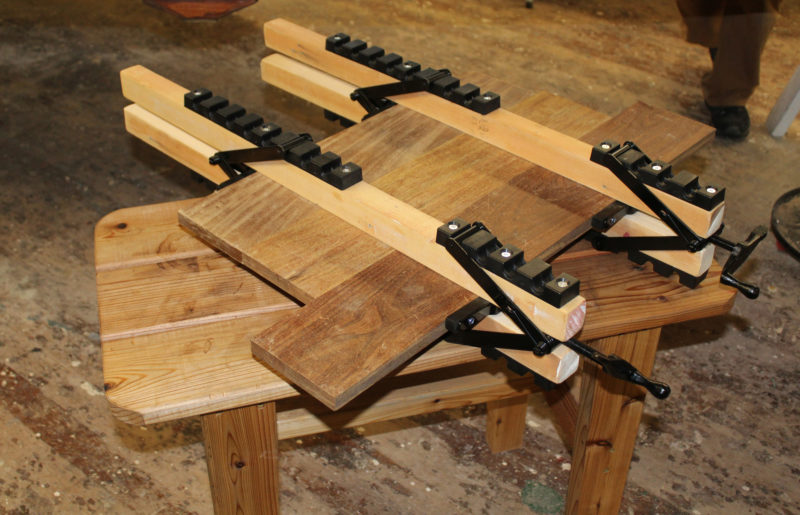 SBM photos
SBM photosThe angled arms of the system pivot to allow the clamps to accommodate work up to 6″ thick as well as apply pressure to the faces of the boards being clamped.
It is often necessary to edge-glue multiple boards to get the width necessary for parts such as centerboards, rudders, trunks, transoms, and thwarts. Anyone who’s ever built a wooden boat knows that gluing up these wide panels can be tricky. The WoodRiver 4-Way Clamping System makes this task a breeze by providing clamping power that squeezes the glue joint tight while keeping the boards aligned with each other.
The most common way to edge-glue wide panels is to lay the boards out and sandwiched the ends between straight sticks clamped to keep the boards aligned and flat; then pipe clamps or bar clamps are used to squeeze the glue joints tight. But these clamps tend to cause the panel to bow away from the pipe or bar, and so the clamps need to be placed on alternate sides of the work piece. This is often a messy affair, as there is a pile of clamps needing to be tightened with equal pressure on both faces of the panel to keep it flat, and it has to be blocked up so clamps can slide underneath.
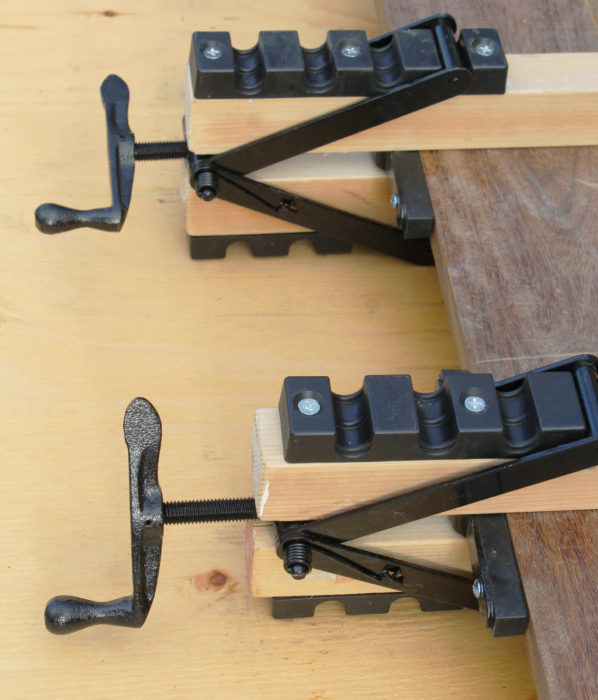
The screw element of the clamp is used on the short notched bar. Some of the pictures of the system on the packing and the drawing in the instructions have the screw side of the clamp engaging the longer notched bar, but only the short bars prevent the 2x2s from interfering with the screw handle.
The WoodRiver 4-Way Clamping System simplifies this process by cutting down the number of clamps necessary, and by applying pressure to the edges and the faces of a glue-up. The device includes two clamping mechanisms and four notched plastic pads. The pads are attached to the ends of a 2×2 (or a halved 2×4) with the screws provided. The V-shaped arms have crossbars at the ends that fit into the pads’ notches and springs on the arms hold them there. In the center of each V is a 6″-long clamping pad, one fixed, the other at the end of the clamp’s screw. When pieces to be glued are set in the clamp, tightening the screw squeezes the glue joints tight and pulls the 2x2s together, flattening the panel between them.
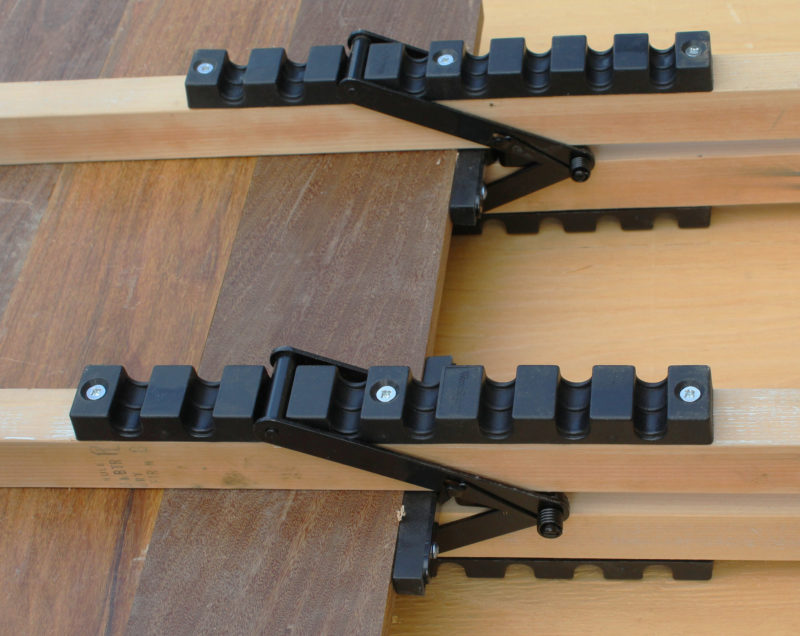
The long notched bars provide for about 12″ of adjustment on the tail end of the 2x2s.
The multiple notches on each pad allow for an adjustment range of 18″, and the system can extend that range by using longer 2x2s. I used two 24″-long pieces cut from a common softwood 2×4. A wrap of packing tape keeps them from getting bonded to the workpiece. The clamping system can accommodate stock between 3/4″ and 6″ in thickness.
I found these clamps relatively easy to use after a couple of practice runs. They take some getting used to, but aren’t any more complicated than using sticks, C-clamps, and bar and pipe clamps. Once I determined which notches to use, I attached the clamping mechanisms to the pads of the 2x2s set on the workbench. I placed the boards, edges coated with glue, on the 2x2s and then slid the top 2x2s into the clamps. I then tightened the handles and that was it. My work piece came out flat with even glue lines, just what I was looking for. I was even able to stand the whole piece against a wall while still in the clamps so I could clean the glue squeeze-out on both sides, which was pretty handy. My pipe and bar clamps tend to add a lot of weight to the work and don’t offer convenient footing to support it on its edge.
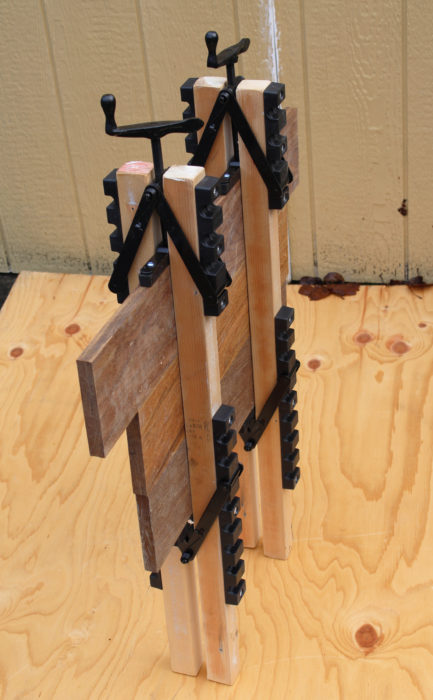
The system provides the work with legs to stand on so it can be set out of the way while the glue cures. Unlike bar clamps and pipe clamps, these clamps can’t be accidentally knocked off.
The only knock on these clamps is that they don’t appear to be as durable or as strong as pipe clamps and bar clamps so they shouldn’t be used to eliminate gaps of poor jointing. They’re at their best for straight, flat edges that don’t need to be squeezed tight to make a good joint. The most commonly used adhesive, epoxy, doesn’t require high pressure to create a good bond. Prompt attention is needed to clean up any glue that ends up on the springs to keep the clamps in good working order.
With some practice, the WoodRiver 4-Way Clamping System can save you time on wide glue-ups by simplifying the process. Given the better results they produce, they would be a welcome addition in any shop.![]()
Josh Anderson attended the Apprenticeshop
The 4-Way Clamping System is sold by Woodcraft for $31.50. It is also available from Rockler and Amazon.
Is there a product that might be useful for boatbuilding, cruising or shore-side camping that you’d like us to review? Please email your suggestions.
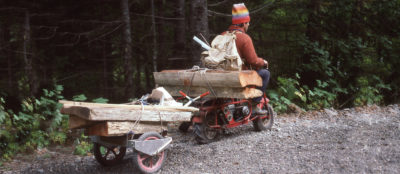

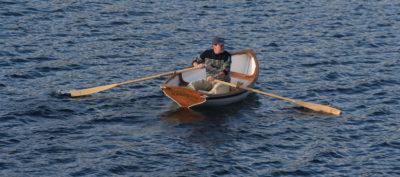

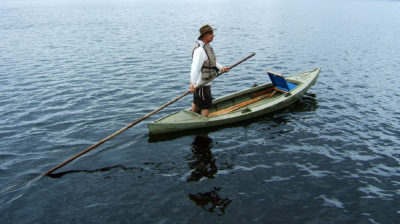
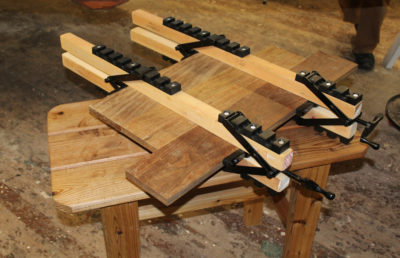
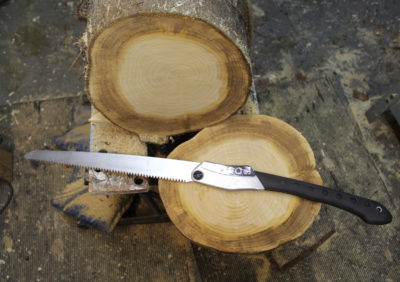
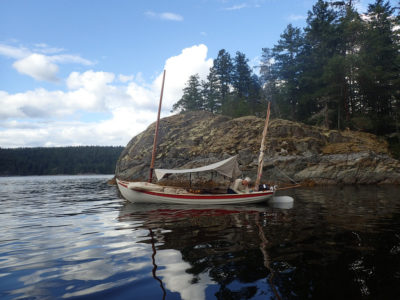
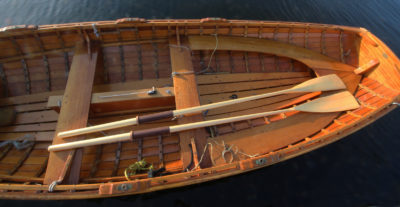
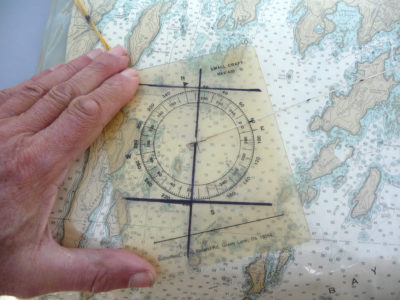
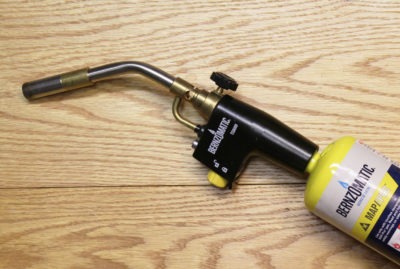

No matter how you clamp up a panel, the edges must be jointed square (and hopefully straight), to get a truly flat panel. I’ve also found that the wood bars need to be protected from the glue. I’ve used masking tape, waxed paper, and the plastic bags that come in cereal or cracker boxes. A tape/plastic combination works best. (My clamps are a homemade version of these).
test 3
I was looking at the Rockler version in the store the other day. One difference is that it doesn’t use the plastic pieces that get hooked onto, the clamping bars have to be notched. This could probably be done by picking wood twice as high, drilling holes and then ripping down the middle.